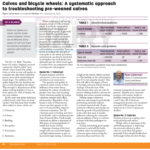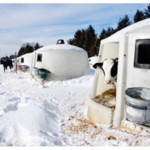Crystal Creek® is proud to announce that Dr. Ryan Leiterman and Lorrie Meister’s recent article “Calves and Bicycle Wheels-A Systematic Approach to Troubleshooting Pre-weaned Calves“, has been published in the Progressive Dairy Magazine.  This article discusses the evaluation of overall calf health. Break one spoke on a wheel, and the whole wheel collapses. Calves are no different. Every aspect of calf care must be carefully managed to optimize calf health and growth. Read more to learn how your calves can benefit from these concepts.
This article discusses the evaluation of overall calf health. Break one spoke on a wheel, and the whole wheel collapses. Calves are no different. Every aspect of calf care must be carefully managed to optimize calf health and growth. Read more to learn how your calves can benefit from these concepts.
Click here to view as a pdf: Calves and bicycle wheels- A systematic approach to troubleshooting pre-weaned calves

Dr. Ryan Leiterman holds degrees in both Agricultural Engineering and Veterinary Medicine.
By Dr. Ryan Leiterman and Lorrie Meister, CVT
On Oct. 11, 1826, Theodore Jones of London, England, received a patent for what he called “wire wheels.” Jones found if he added wires, or what we now call spokes, to a circular rim, the wheel could bear greater stress while maintaining its round shape. The addition of the spokes helped the rim distribute the stress evenly throughout the wheel. This strength is dependent on all the spokes working together; if one or more spokes are weak or broken, the
rim may collapse. In the same way spokes help keep a wheel round, calves have six main “spokes” that help keep them healthy when subject to stress, which are:
1. Colostrum 2. Calories
3. Bedding 4. Air Quality
5. Vaccination 6. Sanitation
Read More →





 By Ryan Leiterman, D.V.M.
By Ryan Leiterman, D.V.M.


